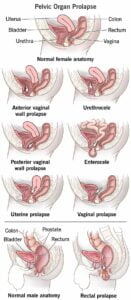Radiation Sickness Diagnosis and Treatment
Diagnosis: Assessing Absorbed Radiation Dose When someone experiences known or suspected exposure to high-dose radiation due to an accident or attack, medical professionals follow specific steps to determine the absorbed radiation dose. This information is crucial for assessing the severity of the illness, choosing appropriate treatments, and predicting survival chances.
Key factors considered for determining absorbed dose include:
- Known Exposure: Details about the distance from the radiation source and the duration of exposure provide an initial estimate of radiation sickness severity.
- Symptoms, Especially Vomiting: The time between radiation exposure and the onset of vomiting serves as a reliable screening tool. A shorter interval before vomiting indicates a higher absorbed dose. Other symptom severity and timing also contribute to the assessment.
- Blood Tests: Frequent blood tests over several days reveal changes in white blood cells and DNA. These changes correlate with bone marrow damage, which directly relates to the absorbed dose level.
- Dosimeter: A dosimeter, if exposed to the same radiation event as the affected person, can measure absorbed radiation dose.
- Survey Meter: Devices like Geiger counters help identify the location of radioactive particles within the body.
- Type of Radiation: Identifying the radiation type informs treatment decisions during emergency responses to radioactive accidents or attacks.
Treatment Goals The primary goals in treating radiation sickness are as follows:
- Prevent Further Contamination: Swiftly remove external radioactive particles. Discarding contaminated clothing and shoes eliminates approximately 90% of external contamination. Gentle washing with water and soap further reduces radiation particles on the skin.
- Address Life-Threatening Injuries: Treat burns, trauma, and other critical injuries caused by radiation exposure.
- Alleviate Symptoms: Manage symptoms associated with radiation sickness.
- Pain Management: Provide relief from discomfort.
Decontamination Process
- External Decontamination: Removing radioactive particles from the skin helps prevent further spread. Washing with water and soap is essential.
- Internal Contamination Prevention: Decontamination reduces the risk of internal contamination via inhalation, ingestion, or open wounds.
Treating Damaged Bone Marrow
- Granulocyte Colony-Stimulating Factor (G-CSF): This protein promotes white blood cell growth and counteracts radiation’s impact on bone marrow. Medications like filgrastim (Neupogen), sargramostim (Leukine), and pegfilgrastim (Neulasta) enhance white blood cell production and reduce infection risk.
- Severe Bone Marrow Damage: Transfusions of red blood cells or blood platelets may be necessary.
Treatment for Radiation Sickness: Internal Contamination and Supportive Measures
Internal Contamination Treatment:
- Potassium Iodide: This nonradioactive form of iodine is crucial for proper thyroid function. When exposed to significant radiation, the thyroid absorbs radioactive iodine (radioiodine) just like other forms of iodine. Taking potassium iodide can fill “vacancies” in the thyroid, preventing radioiodine absorption. It’s most effective if administered within a day of exposure.
- Prussian Blue (Radiogardase): This dye binds to radioactive elements like cesium and thallium. By facilitating their elimination through feces, it reduces radiation absorption by cells.
- Diethylenetriamine Pentaacetic Acid (DTPA): DTPA binds to metals, including radioactive elements like plutonium, americium, and curium. It promotes the excretion of these particles in urine, minimizing radiation absorption.
Supportive Treatment:
- Medicines and interventions address various symptoms associated with radiation sickness:
- Bacterial Infections
- Headache
- Fever
- Diarrhea
- Nausea and Vomiting
- Dehydration
- Burns
- Sores or Ulcers
- Medicines and interventions address various symptoms associated with radiation sickness:
End-of-Life Care:
- Individuals exposed to very high radiation doses face minimal chances of recovery.
- Depending on illness severity, death can occur within two days to two weeks.
- Palliative measures include pain control, nausea management, and psychological or pastoral support.
Feel free to ask if you need further clarification or additional information! 😊


